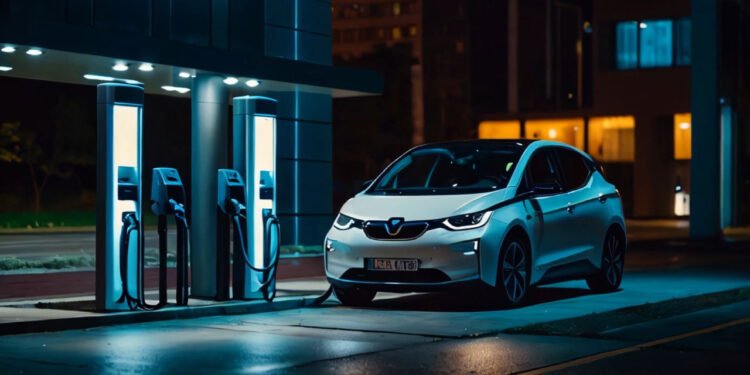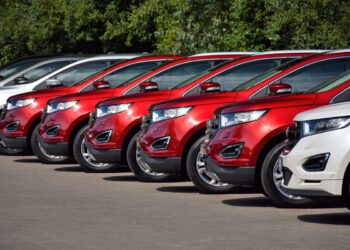Introduction
The automotive world is undergoing a rapid, transformative shift—one strongly fueled by the accelerated adoption of hybrid and electric vehicles (EVs). As consumers increasingly seek cars that offer not only exceptional efficiency but also reduced emissions and lower lifetime operating costs, automotive manufacturers are responding at an unprecedented speed. Innovations in both vehicle design and supporting infrastructure are pushing this momentum even further. Dealerships across the country, such as Orlando Ram dealers, are stepping up to provide customers with firsthand access to the latest hybrid and electric models, making green driving—and the benefits it brings—more tangible than ever. This shift signals a future where outstanding performance and environmental awareness are not at odds but instead form the foundation of the modern driving experience.
At the heart of this remarkable transformation is a compelling convergence of evolving consumer values, technological breakthroughs, and policy support. The last decade has witnessed significant progress in vehicle battery chemistry and management systems, as well as advancements such as real-time route planning enabled by integrated artificial intelligence. Charging networks are growing denser and smarter, and smart grid technologies are emerging to optimize how and when EVs draw power. Whether you’re an industry enthusiast, an everyday commuter ready for your first plug-in vehicle, or simply researching at your local dealership, understanding the current landscape—and what lies ahead—has never been more important. The choices you make now will not only affect your own driving experience but also contribute to collective progress in sustainable mobility.
Advancements in Hybrid Technology
Hybrid vehicles, which once occupied the automotive margins, have steadily evolved into mainstream options that rival and, in many cases, surpass traditional cars in terms of versatility and day-to-day drivability. At Lakeland car dealerships, you can find that hybrids are no longer just about incremental fuel savings. Instead, modern hybrid systems have been re-engineered from the ground up, incorporating advanced battery packs such as solid-state batteries and lithium-ion designs. With greater energy density, today’s batteries deliver not only more power in a compact footprint, but they also enable increased electric-only driving range and allow for quicker, more efficient charging. These advancements reduce both weight and complexity, resulting in hybrids that are nimbler, quieter, and significantly more responsive.
Energy Recovery and Efficiency
A key hallmark of contemporary hybrid technology is its ability to capture and reuse energy that would otherwise be wasted. One powerful example is regenerative braking technology—a system that harnesses the kinetic energy produced during braking, converts it to electrical energy, and sends it directly back to recharge the battery. This process not only extends the electric driving range between charges but also contributes to smoother transitions between electric and combustion power sources. The continual evolution of hybrid drivetrains means today’s models deliver a seamless driving experience, with enhanced fuel economy, lower emissions, and ever-growing appeal to eco-conscious drivers and families alike. By integrating cutting-edge energy management and powertrain technologies, hybrids are truly at the forefront of efficient, forward-thinking motoring.
Electric Vehicles: A Surge in Popularity
The popularity of electric vehicles has reached new, unprecedented heights on the global automotive stage. In 2023 alone, EV sales surged to nearly 14 million units, a significant increase that now accounts for approximately 18% of all new car sales worldwide. A trio of powerful influences has propelled this surge in adoption: rapidly declining battery prices, robust investments in charging infrastructure, and a groundswell of consumer support driven by heightened awareness of climate and environmental concerns. Perhaps nowhere is this mainstream embrace more evident than in the ascendance of models like the Tesla Model Y, which became the global best-seller and a symbol of the shift toward all-electric futures.
Governments around the world have taken notice and are rolling out aggressive policies and incentives to accelerate EV adoption. Subsidies, tax credits, and infrastructure grants are encouraging both automakers and consumers to embrace electrification at scale. The private sector is also heavily invested, with technology companies, auto manufacturers, and local authorities collaborating to establish extensive, fast-charging networks. This expanding web of public chargers—many of which now support rapid charging for quicker turnarounds—has been a game-changer for both rural and urban drivers, eliminating range anxiety and enabling EVs to serve both everyday commutes and cross-country adventures. Additional smart grid integrations are helping ensure reliable power while adapting to fluctuating demand, strengthening the practical case for full electrification.
Environmental and Economic Benefits
The widespread switch to hybrid and electric vehicles is having a significant, positive impact on both the environment and household finances. In terms of emissions, hybrids and especially EVs produce far fewer greenhouse gases compared to conventional gasoline-powered cars. With transportation accounting for a significant portion of annual CO₂ emissions, the shift to cleaner vehicles is a crucial component of climate action plans worldwide. Data suggests that a typical gas vehicle emits nearly 11,435 lbs of carbon dioxide annually. In contrast, hybrids reduce this figure by almost half, and EVs—when charged with clean energy—bring it close to zero. This dramatic reduction not only mitigates climate change but also improves air quality and public health in cities and towns worldwide.
Cost Savings for Owners
The benefits extend beyond the environment to real financial savings for drivers. Choosing a hybrid or electric vehicle can mean substantial cost savings at the pump or charging station. Fully electric vehicles can cost a fraction of what it takes to fuel a gasoline car. Because EVs have far fewer moving parts, maintenance expenses are significantly reduced over the vehicle’s lifetime. Items like oil changes, exhaust repairs, and complex gearboxes are often a thing of the past. Moreover, many governments are supporting the shift through generous tax credits, rebates, and special financing options for those purchasing green vehicles.
Challenges and Considerations
Yet, even as the advantages of hybrid and electric vehicles become clearer, key challenges remain—most notably, the higher initial purchase price. Despite marked reductions in battery costs over the last decade, many hybrids and nearly all EVs carry a price premium compared to similarly sized conventional vehicles. While cost parity is drawing closer every year, for some buyers this upfront investment can be a significant barrier. Automakers are aggressively working to drive these manufacturing costs down further, but affordability remains a topic of discussion for both policymakers and consumers alike.
Also central to the conversation is the accessibility of reliable charging infrastructure, especially for drivers living in multi-unit dwellings or more remote areas. While public and workplace charging options are expanding rapidly, gaps still exist, necessitating careful planning for longer trips and posing logistical hurdles for some potential adopters. Battery longevity and replacement costs are another consideration, but the industry’s response—longer battery warranties, improved battery chemistries, and even emerging recycling technologies—suggests these obstacles are not insurmountable. As investments continue and consumer demand grows, the pathway to ownership is becoming smoother for an ever-larger demographic.
The Future of Driving
As we look to the future, the promise of hybrid and electric vehicles continues to grow with the integration of artificial intelligence and advanced digital systems. Modern cars are rapidly becoming moving computers, equipped with machine learning algorithms that optimize everything from battery management to route planning and predictive maintenance. AI-driven safety features, such as adaptive cruise control, lane-keeping assistance, and self-parking technologies, are reducing driver fatigue and enhancing overall road safety. Moreover, continual updates delivered over the air help keep the latest models current long after their purchase, ensuring improved efficiency and a better user experience throughout the vehicle’s lifespan.
Combined with insightful dealership expertise, consumers are now empowered with more information and a wider range of choices than ever before. As cutting-edge technology and supportive infrastructure mature side by side, hybrid and electric vehicles will continue to take center stage, driving a new era where the modern drive is defined by sustainability, intelligence, and unprecedented convenience for everyday drivers.












